Star Trek: Picard, Season 2 Review – Unfathomable Garbage

And now, for the review nobody was asking for, but we here at Bounding Into Comics felt it necessary to highlight perhaps the greatest travesty in Star Trek history. Picard recently unleashed its second season on its casual audience, whilst seeking to undermine and destroy the franchise’s roots, as is standard fare with everything related to Alex Kurtzman these days.
While the first season of Picard had something resembling a story, the second season is one of the most unfathomable train wrecks in pop culture history, and that’s no exaggeration. There’s nothing resembling even a figment of a cohesive narrative, with the season’s entire plot arc failing to establish any sort of dominant direction.
That’s just the tip of the iceberg when it comes to season 2, a Kobayashi Maru consisting of the worst decisions that only the most incompetent production and writing team would dare proclaim “make it so.”
THE STORY
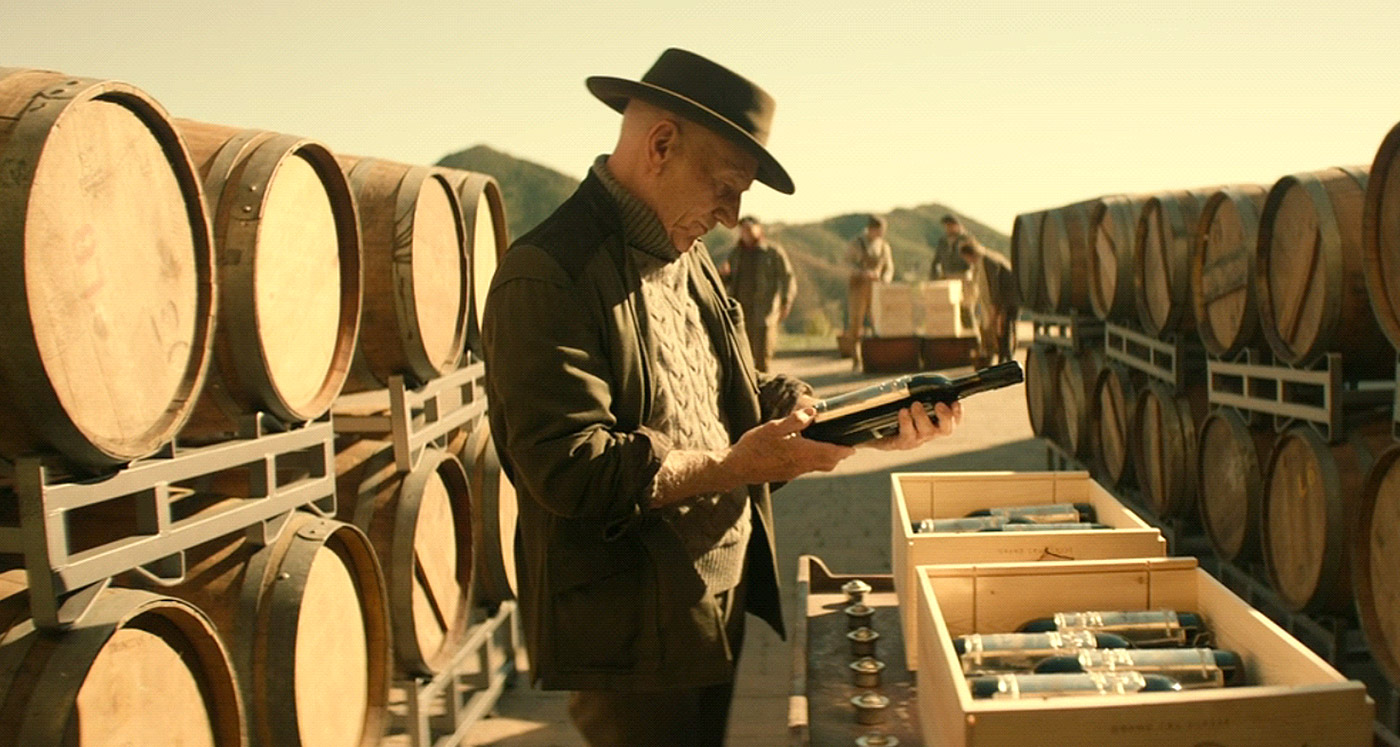
Source: Star Trek: Picard, Season 2, Paramount+
The show picks up shortly after the events of season one, with Jean-Luc Picard resurrected in a synthetic (for stupid reasons) body, tending to his chateau and booming wine business. It isn’t clear why Picard is engaged in the practice of commerce, given the 24th century’s abandonment of capitalism, but he does have his own marketing, design and shipping teams, which is interesting.
After rebuffing the affections of his Romulan refugee friend Laris, who’s husband has (conveniently) passed on, Picard accepts a mission from Starfleet to investigate a temporal phenomenon pumping out a distress call with his name attached to it. He boards the newly fitted USS Stargazer, which is now captained by the rogue season one character Chris Rios, to investigate.
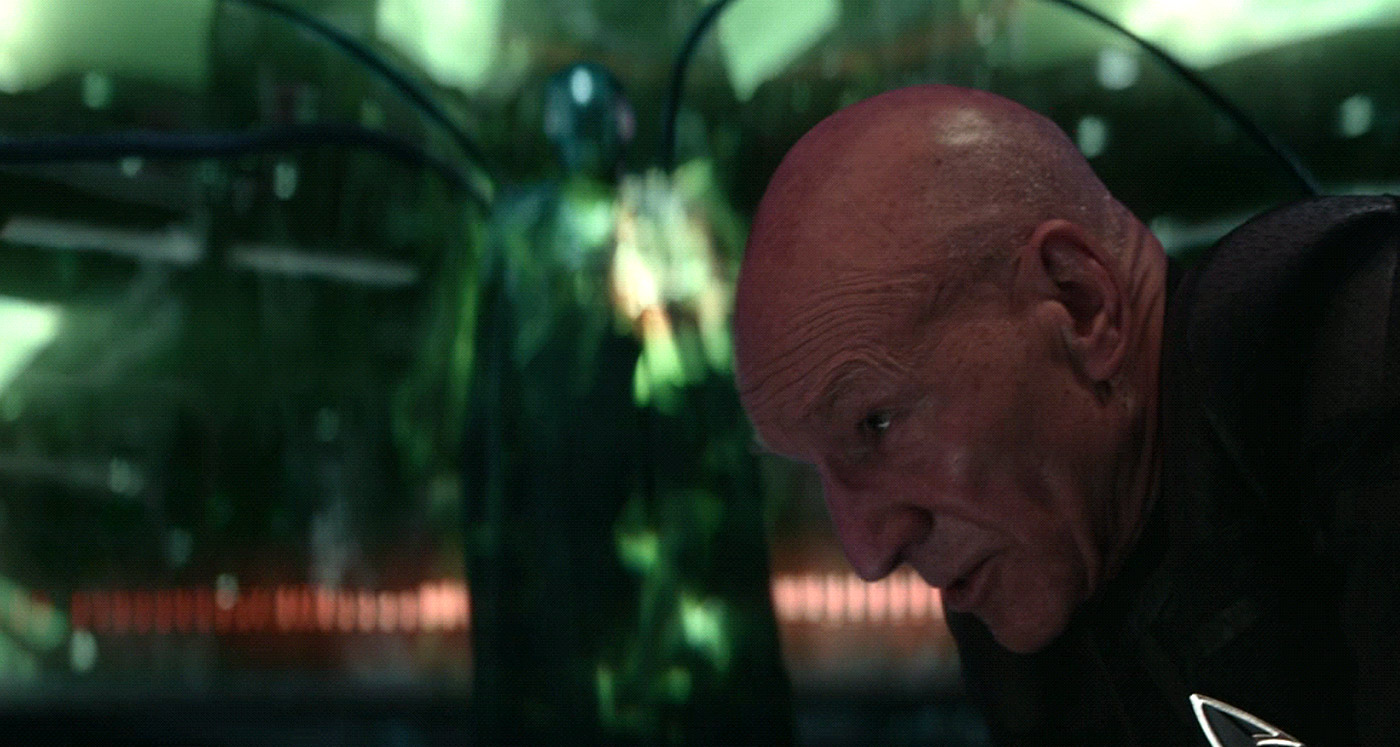
Source: Star Trek: Picard, Season 2, Paramount+
When a Borg ship comes through the temporal anomaly, it immediately transports a mysterious masked Borg Queen to the Stargazer bridge, who tries to seize control of the entire fleet. Fearing a hostile takeover, Picard orders the Stargazer to auto-destruct, killing everyone on board.
However, Picard’s ticket hasn’t yet been punched. He awakens to find himself in an alternate future where he has become a fascistic, genocidal military commander working for the Confederation of Earth, a xenophobic mirror image of the United Federation of Planets. He also learns that several of his friends have been deposited into this alternate future.
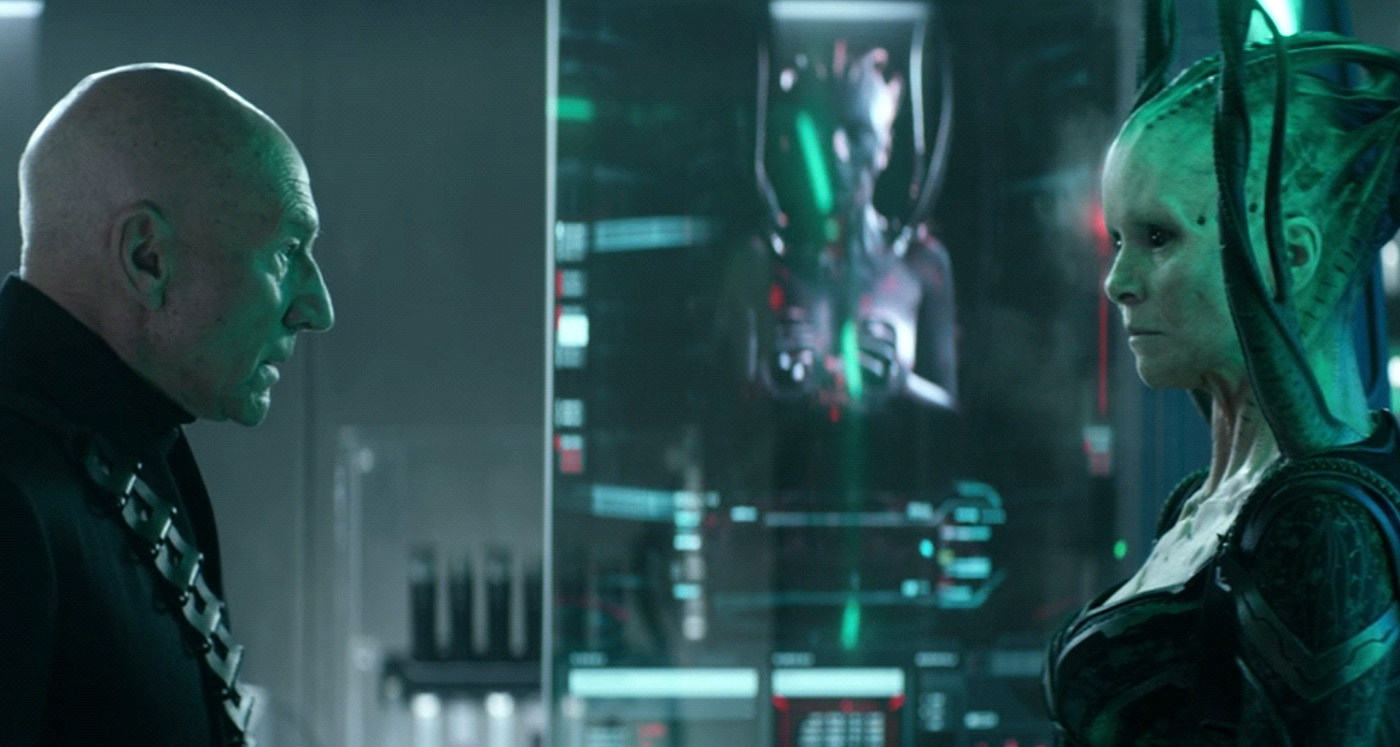
Source: Star Trek: Picard, Season 2, Paramount+
Seven of Nine has somehow become President of the Confederation, with Rios, Agnes Jurati, Elnor and Raffi occupying various roles on both sides of an uprising. Picard learns that the omnipotent being known as Q has taken them out of their future timeline, and challenged them with solving the riddle of this horrible new future.
After jailbreaking a Borg Queen out of Confederate hands, Picard and company slingshot around the sun a la Star Trek IV: The Voyage Home, and find themselves on Earth in the year 2024. They form an uneasy alliance with the Borg Queen to prevent the future timeline from forming, in exchange for the Queen’s return to the collective.
It’s here that the story falls completely off a cliff, and never recovers.
THE GOOD
There are so few redeeming qualities in season 2 of Picard that it’s difficult to pen them for this review. The elements are there, but the incompetence of the writing team damns them to oblivion at every turn. For what it’s worth, Picard and other characters like Seven of Nine are always welcome sights, but their presence is wasted on a script that betrays their source material.
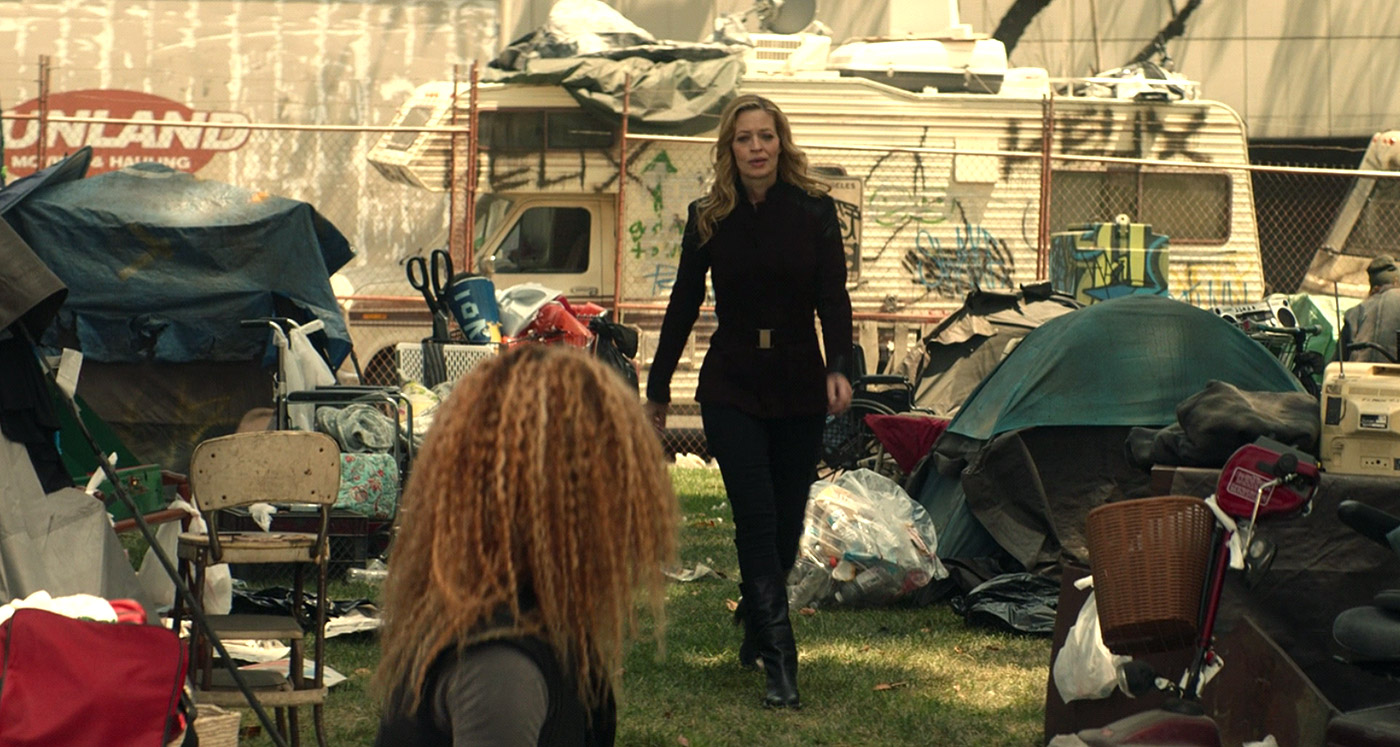
Source: Star Trek: Picard, Season 2, Paramount+
Setting the show in Los Angeles in the year 2024 could have been the ultimate setup for Woke Left politics to spew propaganda regarding the city, and the state of California, but surprisingly, that doesn’t always occur. In fact, I found it downright gob smacking that the writers were brave enough to feature L.A.’s out-of-control homelessness and tent cities in dystopian fashion, prompting Raffi to bemoan “You’re killing it, 2024!”
Unfortunately, one gets the sneaking suspicion that the writers in question were attacking capitalism and class inequality as the root causes of homelessness in L.A., as opposed to years-long one-party Democratic rule under the oversight of incompetent Leftist politicians like Gavin Newsom and George Gascon, both of whom have faced recall efforts by Californian citizens in the last 2 years.
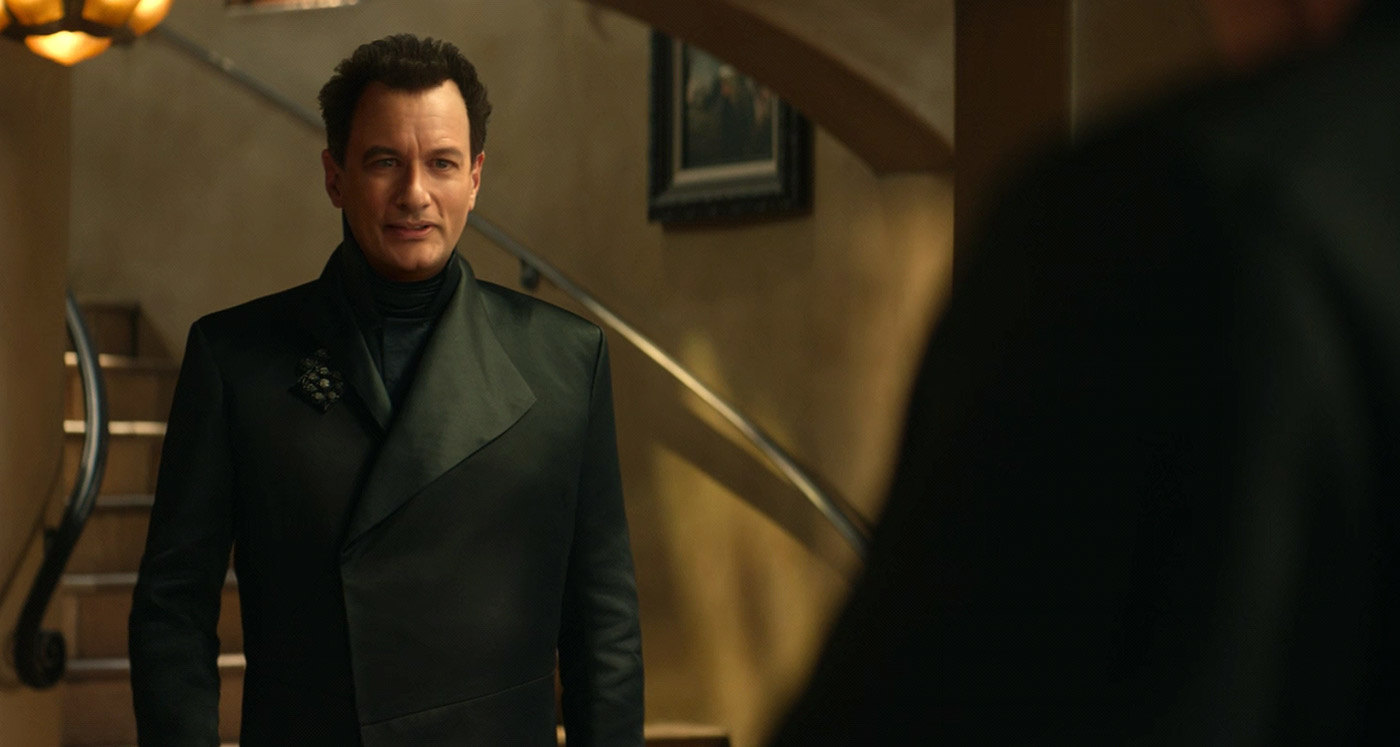
Source: Star Trek: Picard, Season 2, Paramount+
John de Lancie, it must be said, is still in top form, and he’s easily the only character in the show who triggers anything resembling nostalgia.
Unfortunately, that’s where the good stops. It would have been nice to find a few more diamonds in the rough, but they’re simply not present. Picard’s writers run in the exact opposite direction of a good story, likeable characters, and plot arcs that make even the tiniest bit of sense. This is one of the worst writing debacles ever seen in a sci-fi show… or any show, for that matter.
RELATED: Star Trek Fan Launches Petition To Have Alex Kurtzman’s Star Trek Designated As Non-Canon
THE BAD
With a creative team comprised of so many radically Left voices, it was inevitable that Picard’s 2024 setting would pounce on the opportunity to once again demonize America’s ICE and border patrol agents as xenophobic, sadistic racists. The show treats these personnel with utter revulsion, venomous hatred, and seething contempt, and it’s despicable.
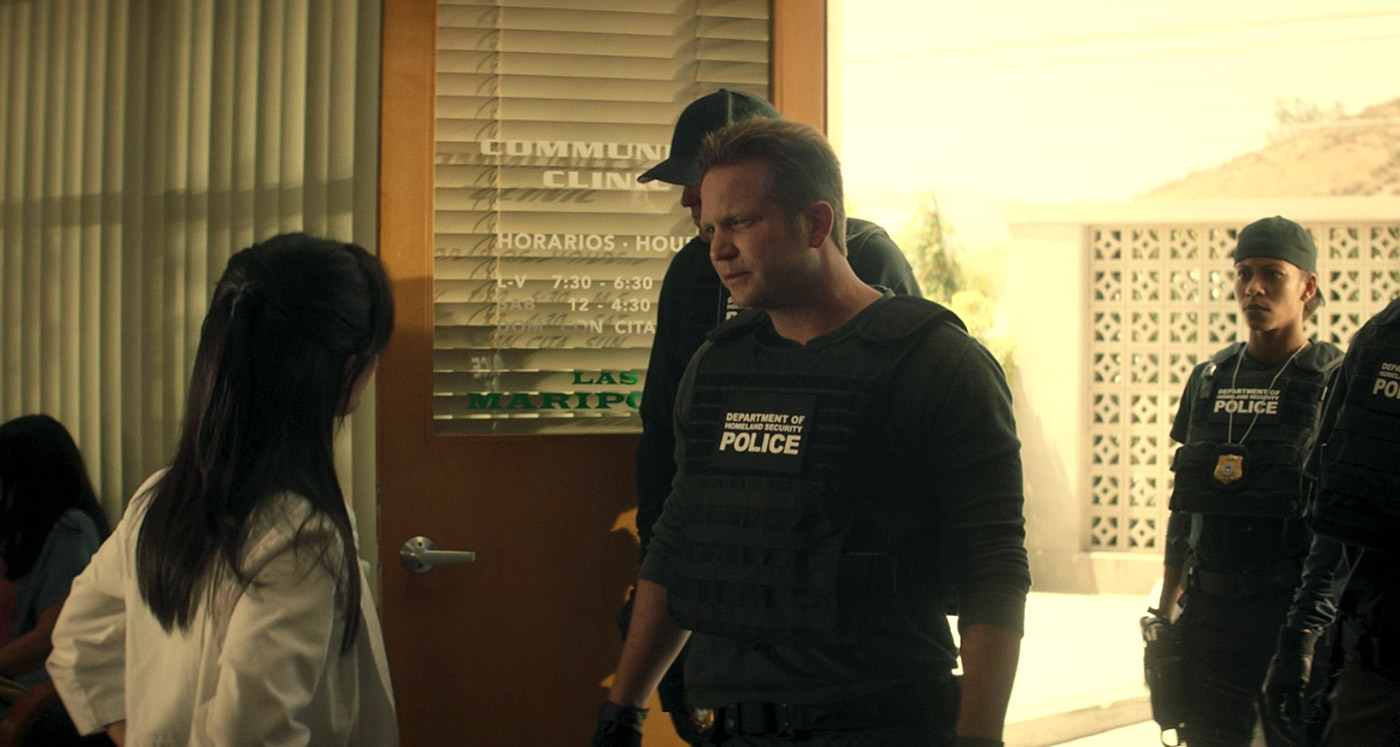
Source: Star Trek: Picard, Season 2, Paramount+
It’s also not a smart propaganda play, given that the majority of American voters on both sides of the political aisle view illegal immigration as a massive problem which needs to be taken care of, immediately.
This kind of dishonest rhetoric is even more obvious with the Confederation of Earth, obviously an attempt to reference the past crimes of the American Confederacy, and pin them on the Republican Party. Unfortunately, the Confederates were all Democrats, and the controversial Confederate Flag was also created by the Democratic Party, which pushed to maintain slavery as a status quo.
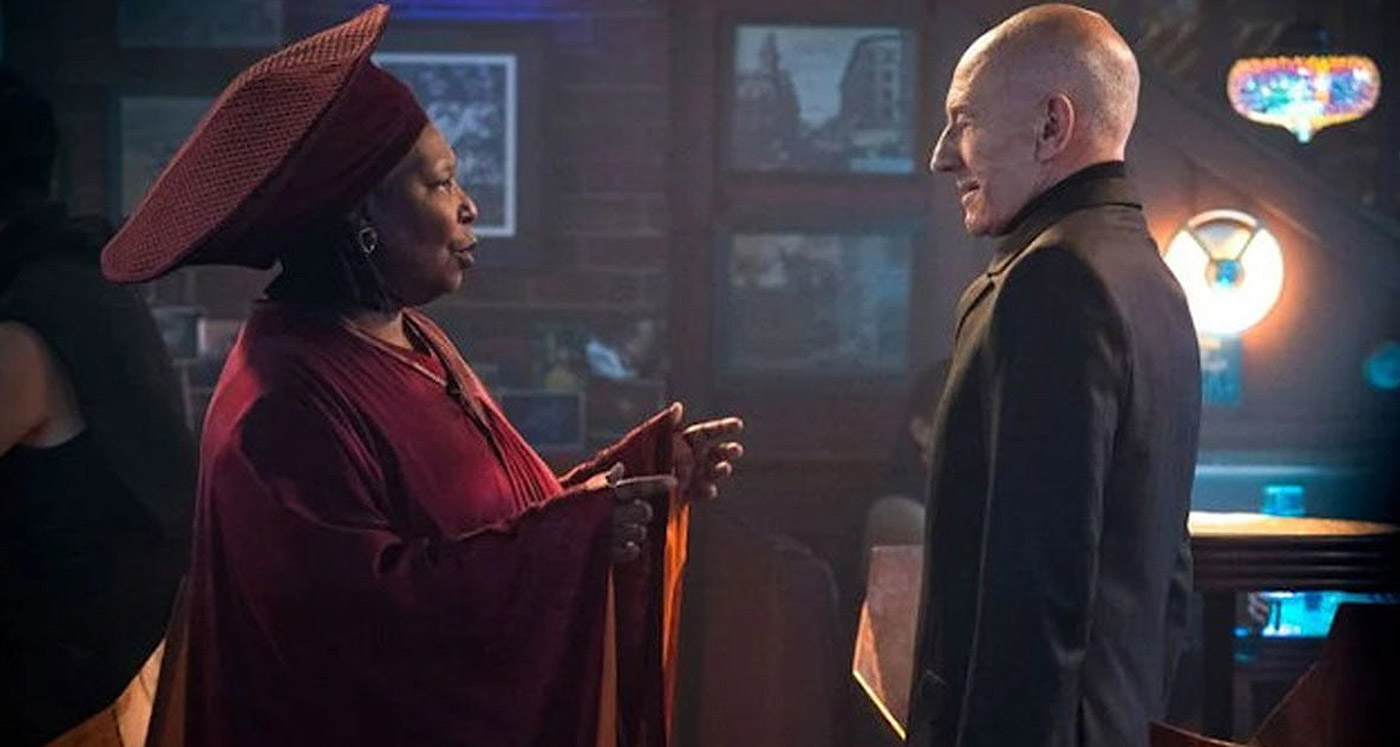
Source: Star Trek: Picard, Season 2, Paramount+
Next, we get to the characters, most of which are either completely unlikeable, or totally irrelevant to the overall plot. Whoopi Goldberg makes a not-so-stunning return to the show as Guinan, hot on the heels of her controversial, anti-Semitic defense of Adolf Hitler and the Nazi Party. Guinan was always a likeable character in The Next Generation, but here, it’s impossible to separate Goldberg from the character long enough to feel any of that old charm.
Later, she gets swapped with a younger actress, setting up a glaring plot hole that makes no sense. Star Trek: TNG established that Picard and Guinan met centuries prior, during the events of the season 5 cliffhanger story “Time’s Arrow.” Here, she holds Picard up with a shotgun, as if she’d never met him before.
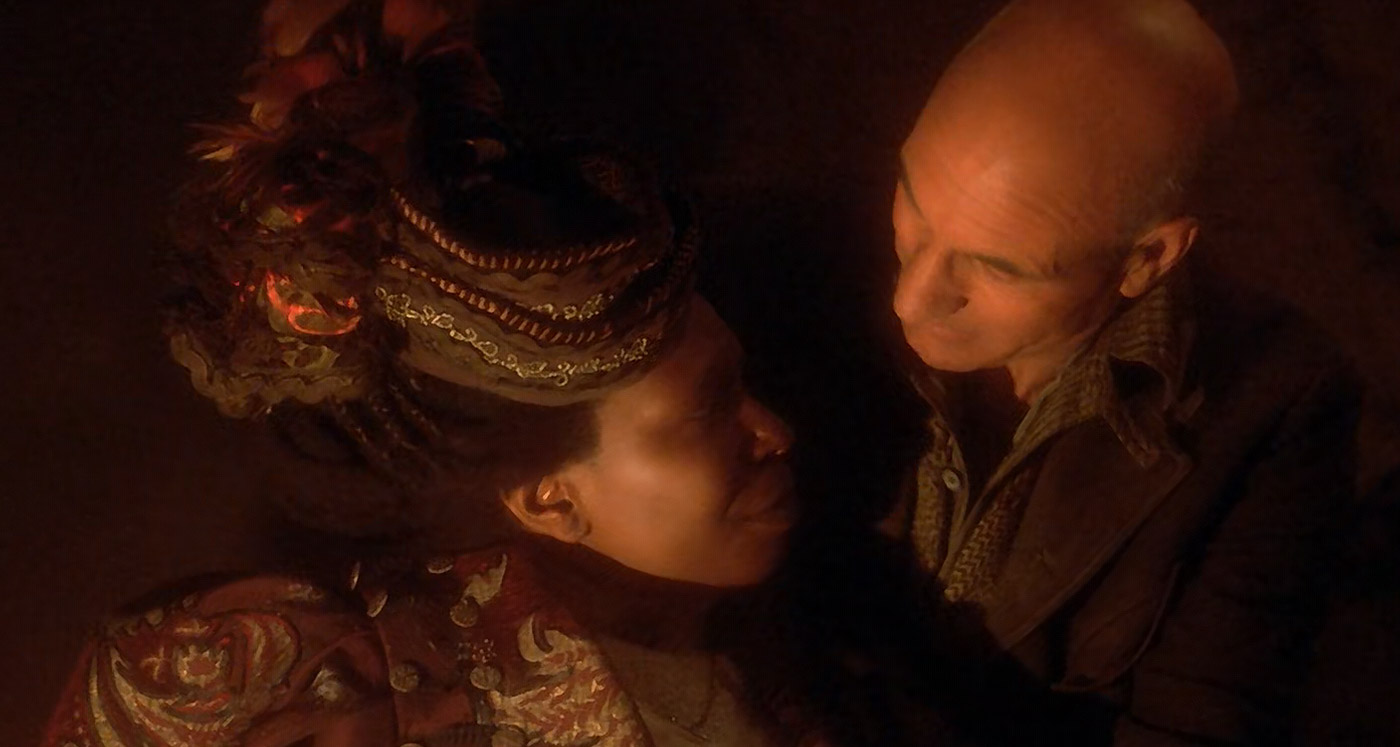
Source: Star Trek: The Next Generation, Paramount
The hapless writing team attempts to pad the unworkable, paper-thin story with more characters… and more characters, all of which are utilized as some sort of familiar anchor for viewers with short attention spans.
TERRIBLE CHARACTERS
Never mind the fact that the Picard writing team has successfully bludgeoned everyone’s beloved captain to death, and turned characters like Seven of Nine into token bisexual butt-kicking third-wave feminist cutouts. That’s nothing compared to what they do in season 2, beginning with the awkward reappearance of the God-like entity known as Q.
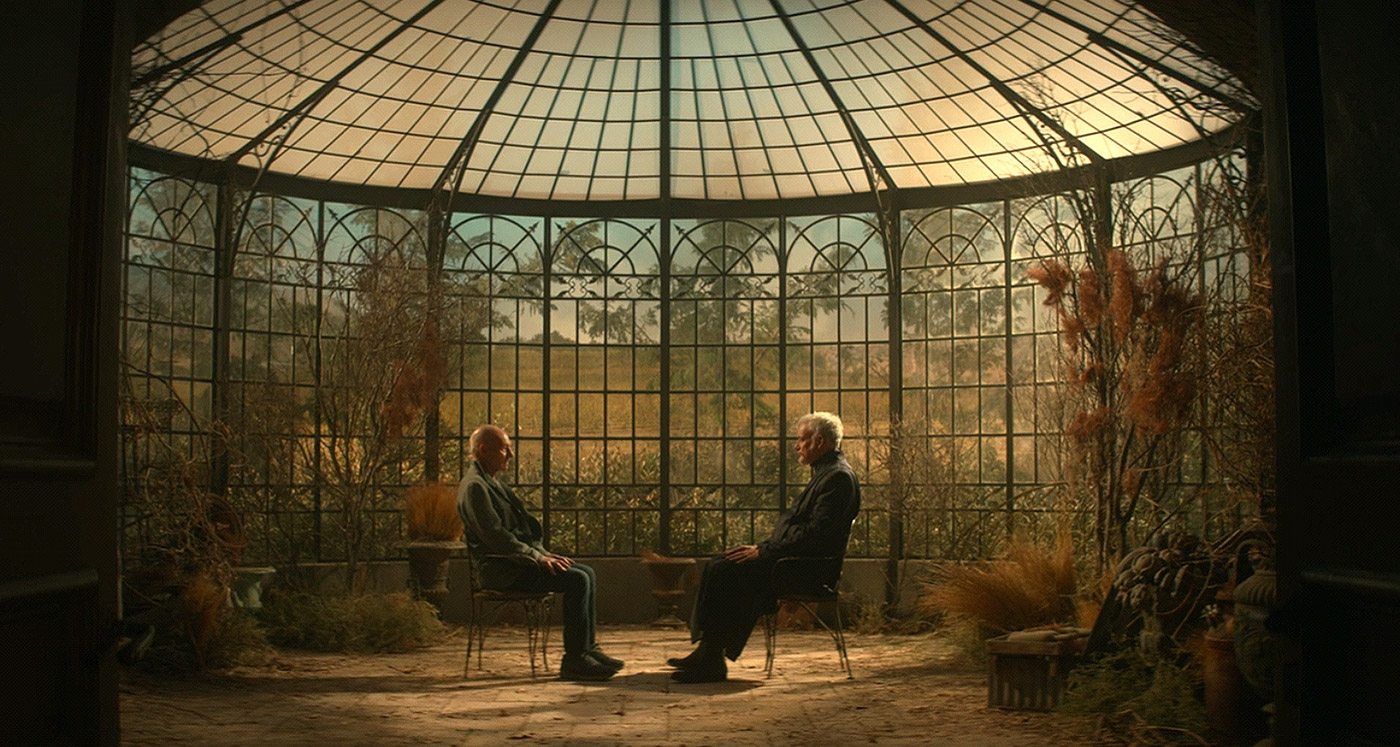
Source: Star Trek: Picard, Season 2, Paramount+
Actor John de Lancie slips right back into the role of Q like a comfortable jacket, and he steals the scenes that he’s in. The problem revolves around his character’s motivations for throwing Picard and company into another hellish scenario, for completely ambiguous reasons. Oh, and he’s also dying, because apparently all-powerful gods can do that now.
Then we get several actors double-dipping themselves into new roles, for no discernible reason. Orla Brady, who plays Laris in season one and two, also portrays a Watcher known as Tallinn, who’s job it is to look out for the well-being of Picard’s old ancestor Renée Picard (played by the The Hyperions‘ Penelope Mitchell).
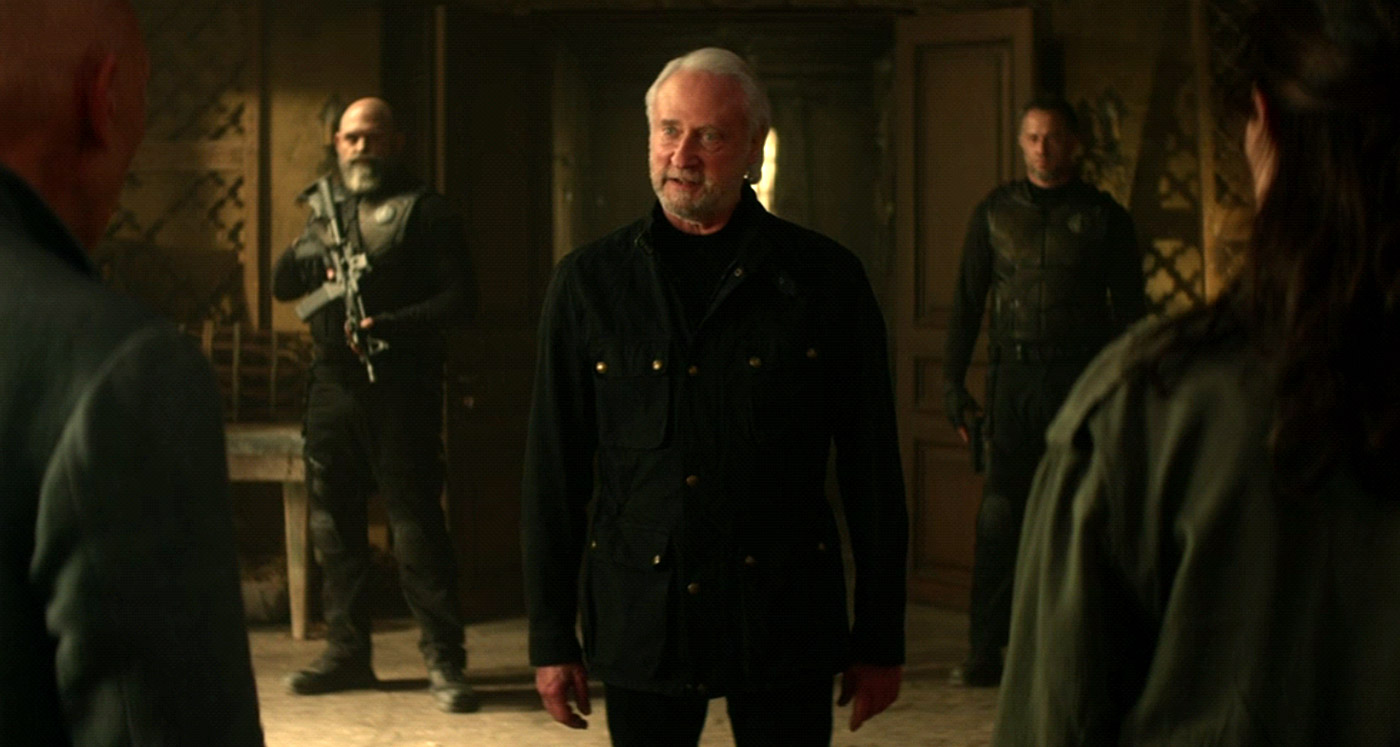
Source: Star Trek: Picard, Season 2, Paramount+
It makes no sense for Brady to play two characters, but the confusion doesn’t stop there. Isa Briones briefly reprises her role as Soji Asha for one scene, before filling the shoes of Kore Soong, a genetic “daughter” of scientist Adam Soong, played by… yes, you guessed it, Brent Spiner.
With each new Star Trek show, we seem to get another Soong played by Spiner. With Picard, audiences are gifted with not one, but two Soongs… one for each season. To say that this kind of double-dip Star Trek casting is getting ridiculous is the understatement of the millennium.

Source: Star Trek: Picard, Season 2, Paramount+
Evan Evagora briefly reprises his role as Elnor, before being offed in one of the early episodes. This throws Michelle Hurd’s Raffi Musiker into an emotional tailspin, given how close the two had become since season one. She spends the first half of the season pining for his return, but by the end of it, she’s locking lips with Seven of Nine again.
By the way, worth noting – the lesbian relationship between Raffi and Seven was hinted at in the final episode of season one, yet it’s disappeared completely in season two. Obviously, the showrunners decided to toss in the obligatory lipstick lesbian queer-baiting, before Seven puts a lid on it. I wonder what GLAAD would have to say about this, if I actually cared.
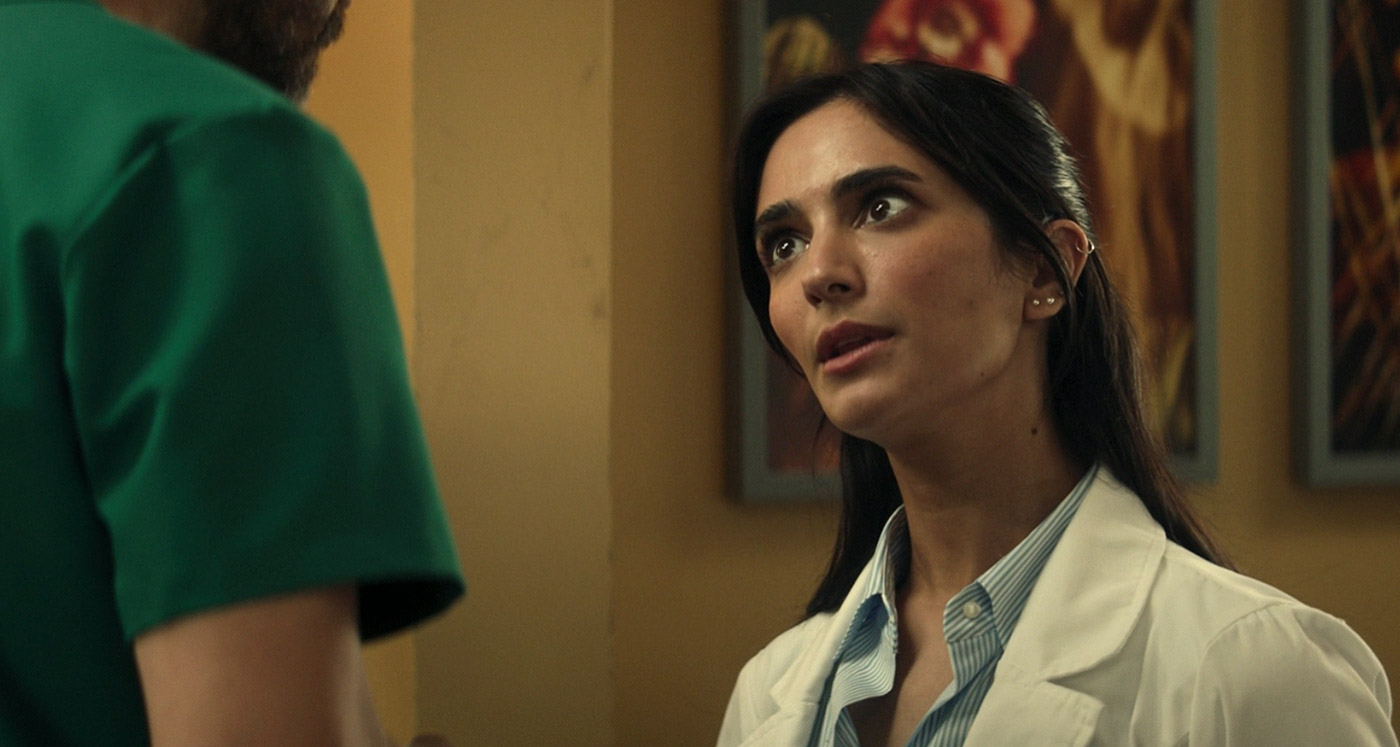
Source: Star Trek: Picard, Season 2, Paramount+
Ancillary characters pop up throughout the season who are either extremely annoying, or redundant to the plot. Sol Rodriguez plays Teresa Ramirez, a thoroughly irritating, unpleasant and resentful “strong, independent woman” who runs down love interest Chris Rios at every opportunity, only to flirt with him, then proceed to run him down again. Naturally, Rios takes it like a beta male, as is standard fare in Leftist character development.
RELATED: Zachary Quinto Says He Has Received No Updates On Star Trek 4: “I Don’t Know When It Will Happen”
Next, we have the aforementioned Penelope Mitchell as Renée Picard, the distant ancestor of Jean-Luc who is poised to go into outer space on a mission that will somehow decide the future of mankind. She shows up for a handful of scenes, and her character is never given the screen time necessary to create any sort of impact on the audience.
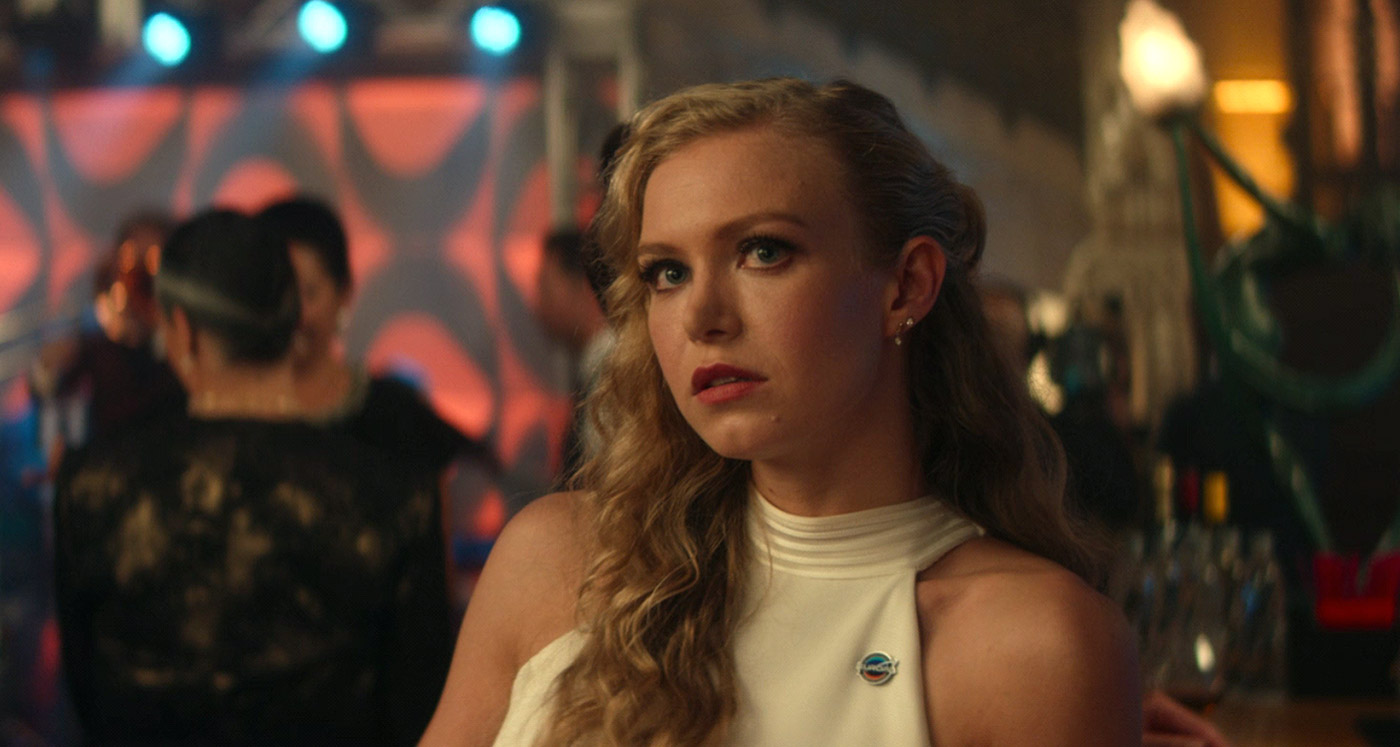
Source: Star Trek: Picard, Season 2, Paramount+
By the time her shuttle rockets into space in the final episode, nobody cares, because every other awful character has hogged her screen time. In fact, Renée’s story arc should have been the linchpin of the entire season, but that duty instead falls on repressed memories within the mind of Jean-Luc Picard.
DIVING INTO THE PAST
Audiences learn in the final episode of the season that Q orchestrated the galactic-wide catastrophe so that Picard could deal with his repressed childhood memories. No, that’s not a joke. The story jumps back into Picard’s past where the young boy lives with his mother and father, the former of whom seems to be suffering from some sort of abuse, presumably at the hands of the latter.
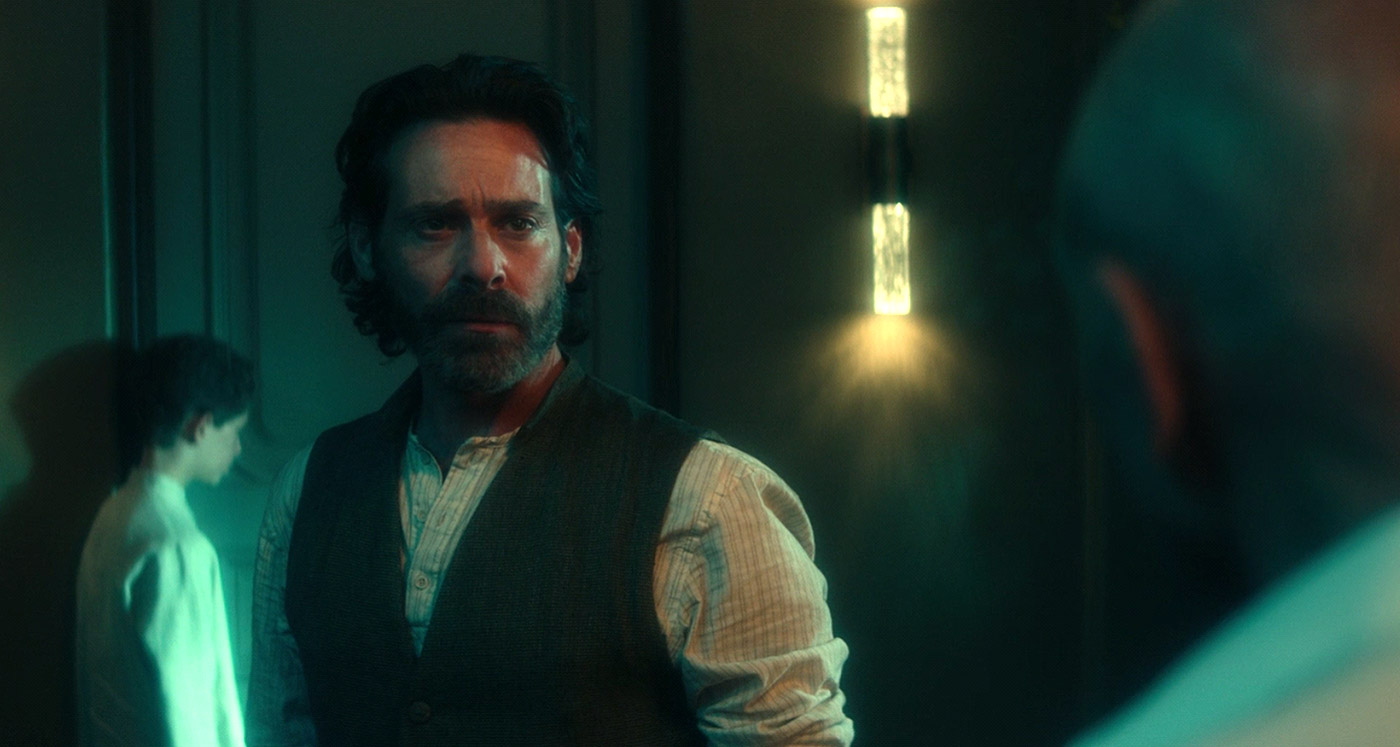
Source: Star Trek: Picard, Season 2, Paramount+
Credit should be given to the writing team for eschewing the standard Leftist fare of making every white male character an evil abuser, and every woman a victim of ‘”toxic masculinity.” We end up learning that Picard’s mother suffered from an unfortunate mental illness that eventually drove her to suicide, while Picard’s father did everything in his power to help, but to no avail.
Interestingly, Picard’s older brother Robert does not factor into this plotline at all, which is a huge missed opportunity to dive further into his rocky childhood. Instead, it’s Picard and his parents going through personal trauma inside the old Chateau, which quickly becomes the primary set piece of the entire show. The reason, of course, is the budget.
PRODUCTION VALUES
It’s clear that season two of Picard was not operating with a particularly high budget, as evidenced by the decision to plant the story in 2024, close to home in California. The use of Picard’s Chateau is for obvious reasons – to keep costs down across the board. The rest of the show is shot on various streets and inner buildings, none of which look particularly dressed up.
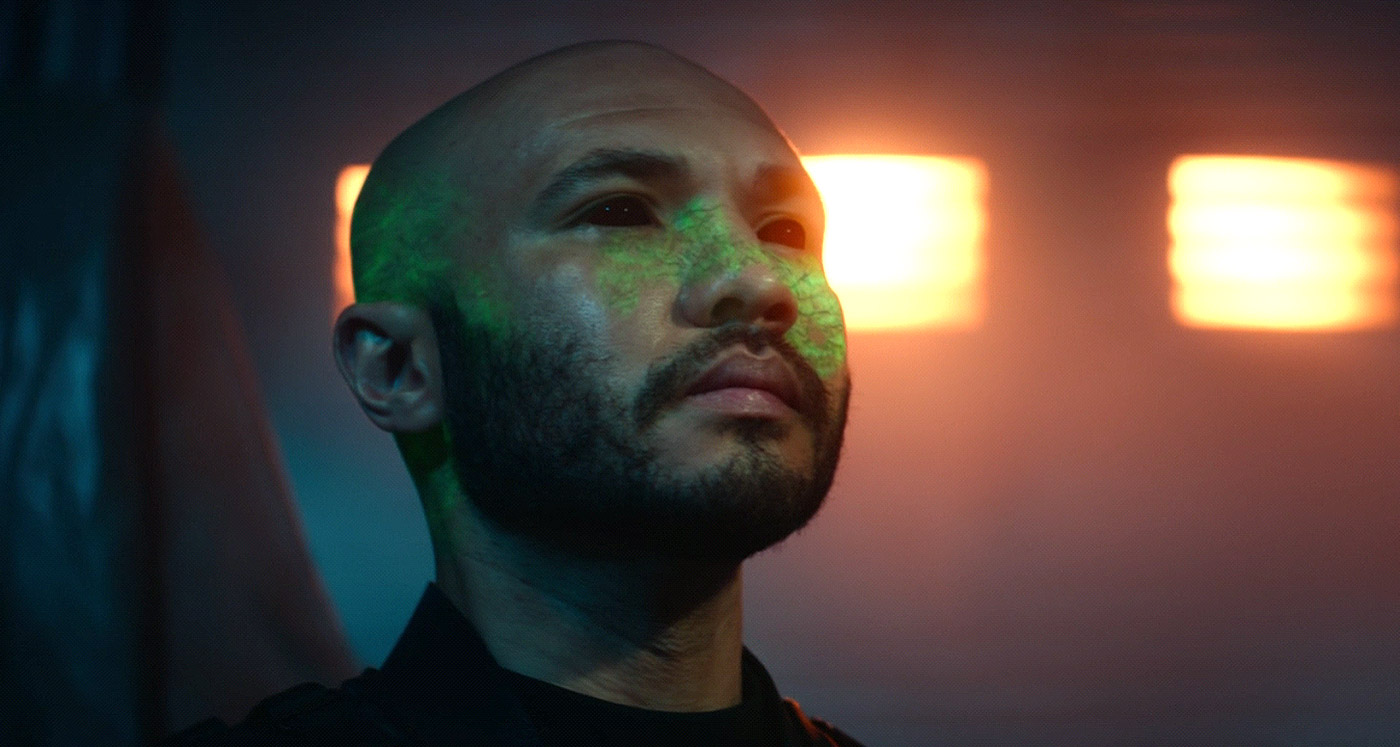
Source: Star Trek: Picard, Season 2, Paramount+
Even the visual effects are subpar for a production of this kind. In fact, the show is so broke that not a single Borg drone makes an appearance as anything except a mind-controlled mercenary carrying an assault rifle with a green laser sight. Borg technology makes it quite clear that a Queen could assimilate and turn an organic being into a full-fledged drone in relatively short order.
In fact, the Queen is the only actual Borg represented on screen, and she’s a bit of a far cry from the excellent model portrayed in Star Trek: First Contact, as well as certain episodes of Voyager. For a property like Star Trek, the production values in Picard feel like old-style guerrilla filmmaking on a shoestring budget.
PLOT ARCS, SO MANY PLOT ARCS
Season two of Picard is saddled with an exhausting amount of plot arcs, all of which fight amongst themselves for screen time, and never take the reins to establish a core purpose. Here they are, laid out in all of their nonsensical glory.
• The newly-benevolent Borg collective offering an olive branch to the Federation, before making themselves out as a threat, which causes Picard to blow up his own ship and create a nightmarish future timeline.
• The Confederation of Earth, a xenophobic and racist society wiping out other races around the quadrant, yet can’t seem to fix their own planet’s environmental problems.
• A Borg Queen who “mind-melds” with Agnes Jurati, creating an antagonistic love/hate relationship, with both battling for Jurati’s physical body.
• Q’s intervention, and his scheme to deposit Picard and his comrades in a future timeline, where they must undo the damage caused by a past event.
• Rios’s capture by ICE, and subsequent relationship with Teresa, a physician and single mother of a young son.
• The Supervisor, and her role in watching over the fate of Renée Picard, an astronaut with a monumental destiny.
• Renée Picard, a young female astronaut about to set off on a very important mission, but is having self-doubts and second thoughts.
• Adam Soong’s genetic cloning, and his involvement in an assassination attempt of Renée Picard.
• The Supervisor Tallinn diving into the mind of Picard, who is struggling to cope with repressed traumatic memories of his childhood relationship with his own mother.
• FBI agent Martin Wells, who had a close encounter with a Vulcan as a young lad, and is now obsessed with aliens potentially invading Earth.
It’s a jumbled mess that feels rudderless, and more importantly, leaderless.
PLOT HOLES, SO MANY PLOT HOLES
I reiterate – season two of Picard has one of the most ridiculous and self-defeating stories ever penned, and it shows. It begins early on, with a masked Borg Queen trying to take over the Federation fleet, prompting Picard to instigate a self-destruct countdown. The mysterious figure under the mask is Agnes Jurati, who has developed a special bond with the Queen that has caused her to change her wicked ways.
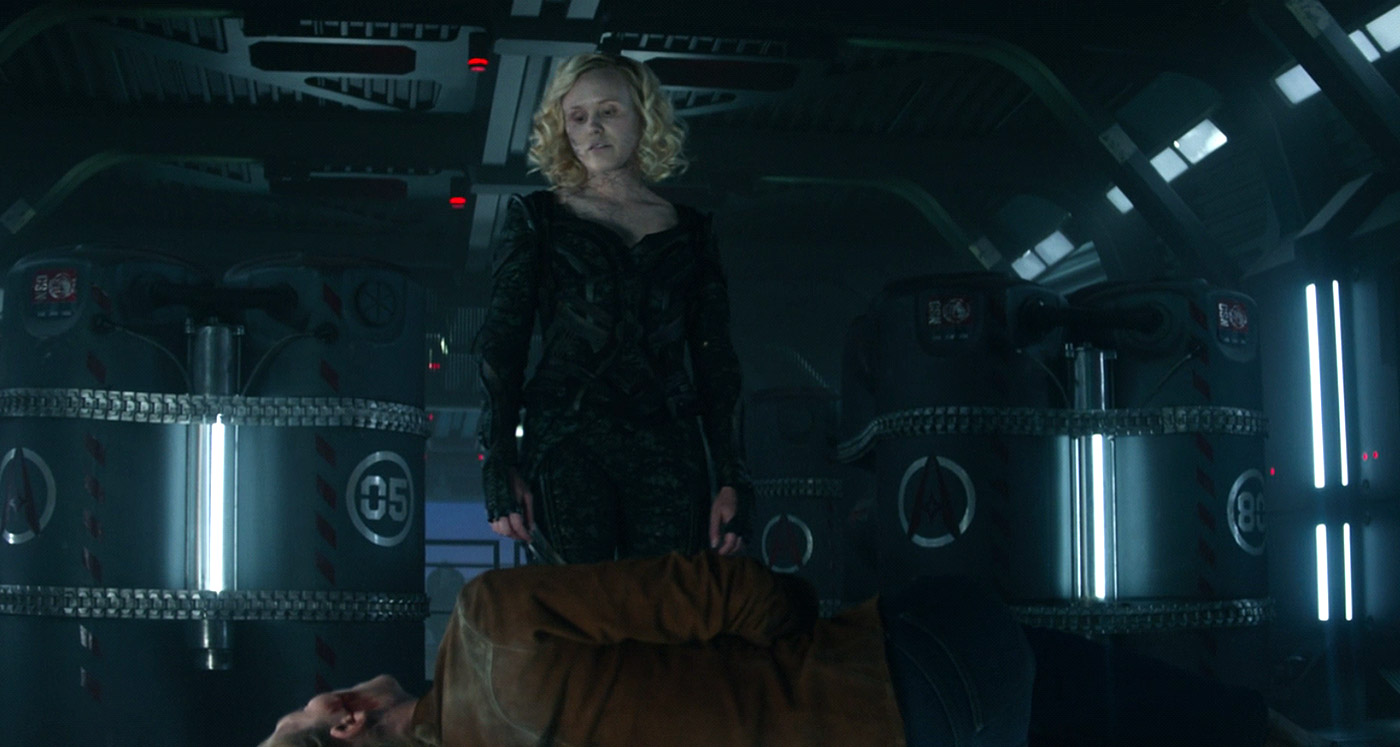
Source: Star Trek: Picard, Season 2, Paramount+
Why not simply unmask and reveal herself at the beginning of the first episode? Wouldn’t that cause Picard to stop and think things over? While the countdown is in full effect, the Jurati Queen goes about her business, offering nothing in terms of protest or pleading. This is the beginning of the train wreck that follows.
Throughout the season, the writers never explain how, or why Q is dying. It has been established that Q can be killed by one another, but the way Picard approaches the topic suggests he’s dying of old age, or some equivalent. There’s no ascension to a higher plane of existence, as evidenced by Q’s own fears about his mortality.
Therefore, it makes little sense for him to actively work against Picard with the fate of the galaxy hanging in the balance. Q paradoxically says in the final episode that it was never about a major galactic catastrophe, but a chance for one man to face his own traumatic past, and move beyond it in order to battle against a yet-unnamed future threat.

Source: Star Trek: Picard, Season 2, Paramount+
Surely he could have accomplished this with a story similar to the classic TNG episode “Tapestry,” which allowed for a more focused narrative.
Then there’s Agnes Jurati bonding with the Borg Queen and inhabiting the same body. Eventually, Jurati learns that the Queen founded the Borg collective out of loneliness, which is a trait she also shares. It’s this shared yearning that allows Jurati to turn the Borg into a benevolent force. It also annihilates any last vestiges of mystery surrounding the Borg. They are no longer an interesting foe, so that’s done and gone.
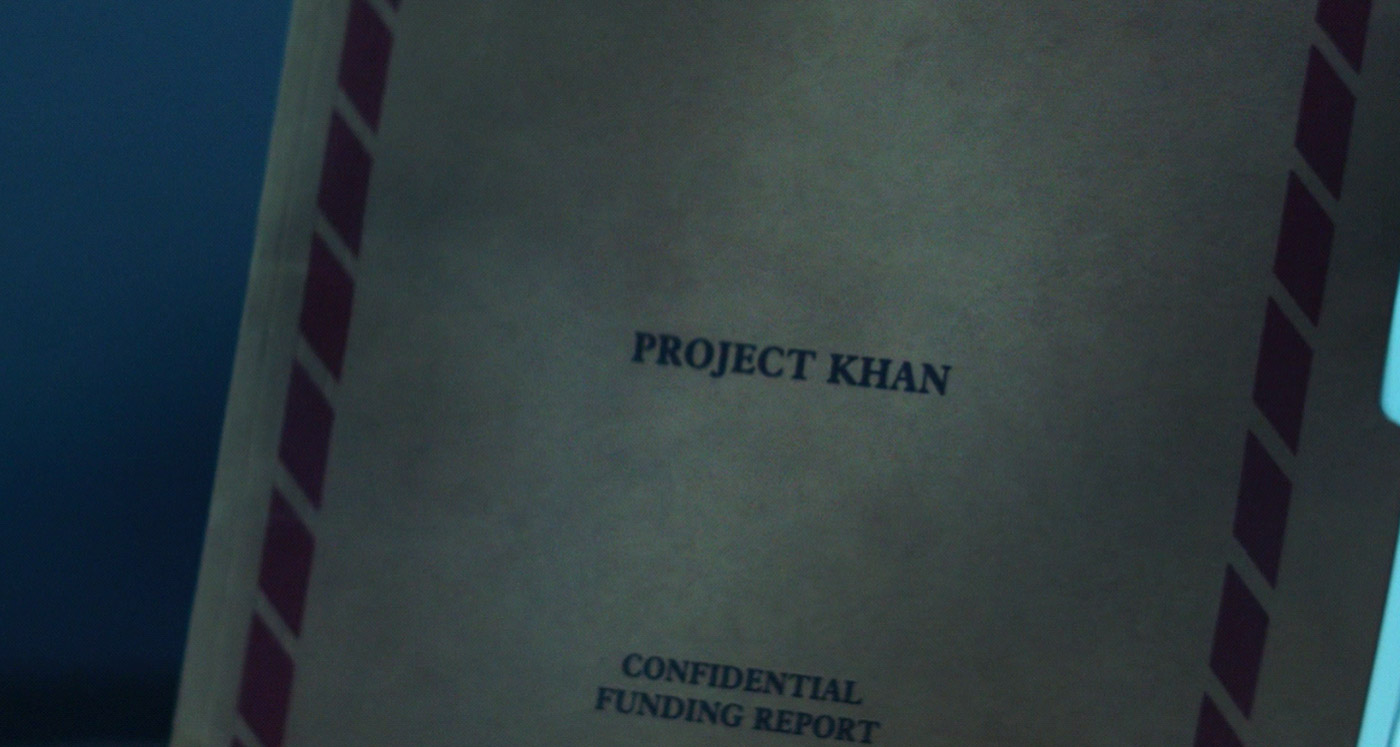
Source: Star Trek: Picard, Season 2, Paramount+
And finally, Adam Soong’s defeat at the hands of his daughter Kore leads him to yank a file out of a cabinet which directly references the villainous Khan from Star Trek II, despite the fact that the story takes place in 2024, approximately twenty years after the Eugenics Wars, where Khan controlled almost a quarter of the planet Earth.
THE WORST FINAL EPISODE IN STAR TREK HISTORY
The season ends with perhaps the worst, and most counterproductive final episode in the franchise’s history. First, its attempt to wrap up a mind-boggling array of superfluous plot lines feels like it was done with a stapler gun and electrical tape. Q’s fond farewell to Picard is as head-scratching as it is comically awkward, and Rios’s decision to remain in 2024 affects nobody.
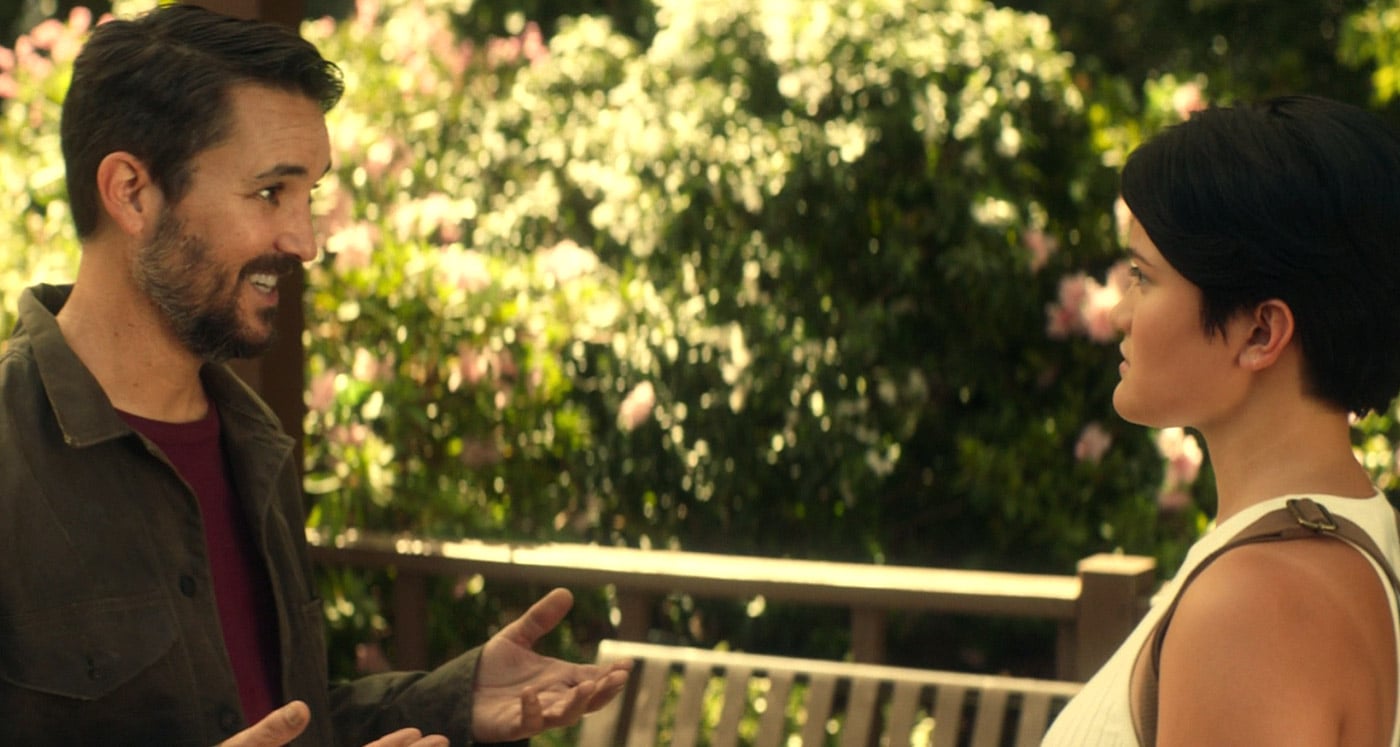
The writers saw fit to toss in a few “surprises” in the final episode, beginning with the excruciating Wil Wheaton making a goofy and disjointed return as Wesley Crusher, now a full-fledged Traveler, who for some reason recruits Soong’s daughter Kore into his ranks, for reasons that will no doubt be revealed in agonizing glory in another season.
Words can’t express how awful Wheaton’s cameo is, especially given his maniacal and lunatic social media rants, where he’s attacked everyone from Dave Chappelle, to the entire white race, calling them “domestic terrorist insurgents.” He’s one of the most awful and vile extreme-radical Leftists around, and he completely ruins Wesley’s return, such as it is.
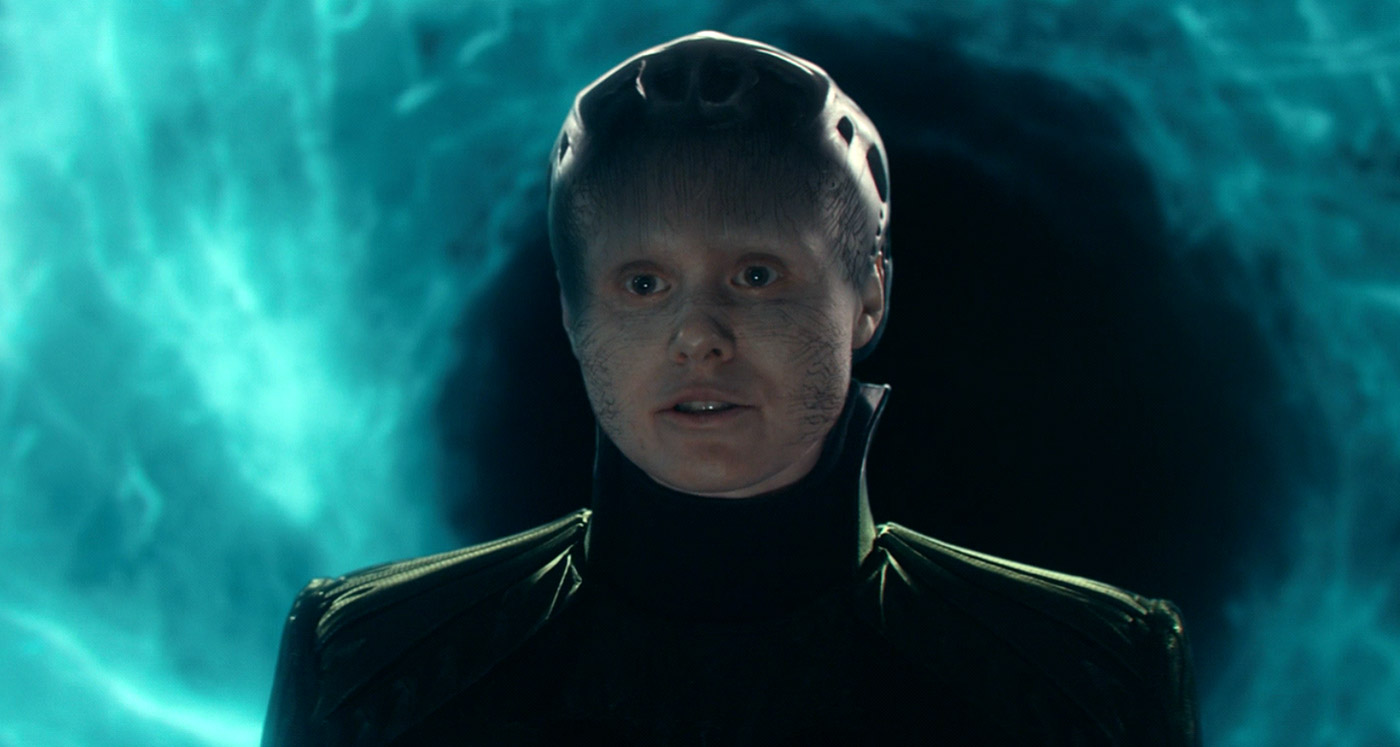
Source: Star Trek: Picard, Season 2, Paramount+
It’s all a setup for a mysterious trans-warp conduit in galactic space, which the Borg offer to act as guardians against an unknown threat within. For all of its superfluous fluff and meaningless delivery, season 2 is little more than a precursor to the upcoming season 3, and that’s about as far as it goes.
CONCLUSION
There was a time when fan fiction was viewed with chuckles and ridicule, but we’ve now reached a point where they could actually do a better job than the writing team on Star Trek: Picard. Akiva Goldsman and Terry Matalas are terrible showrunners who don’t have a clue what they’re doing, and they’re flanked by nine writers who shouldn’t be anywhere near a Star Trek franchise.
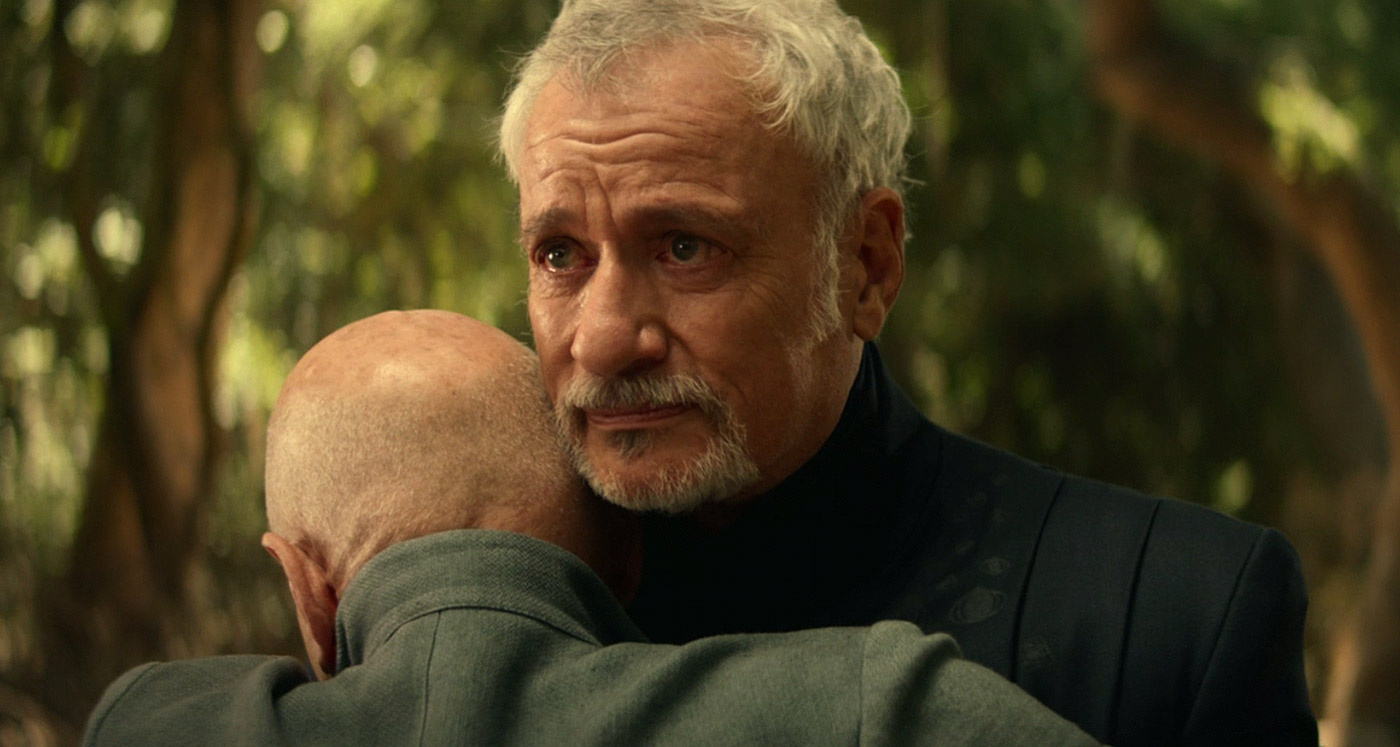
Source: Star Trek: Picard, Season 2, Paramount+
In fact, a quick check of the IMDb pages for writers Christopher B. Derrick, Juliana James, Matthew Okumura, Kiley Rossetter, Terry Matalas, Cindy Appel, Jane Maggs, Christopher Monfette and Travis Fickett reveals a team that is clearly inexperienced, and not even remotely close to the brilliance of classic TNG scribes like Ronald Moore, Brannon Braga, Melinda Snodgrass, and Joe Menosky, to name a few.
As such, Picard season 2 moves the character, and the show’s lineage farther away from the source material it was based on. Not only is it one of the most poorly written seasons in history, but it’s the direct antithesis of everything that made Star Trek: TNG and its fantastic captain so great.
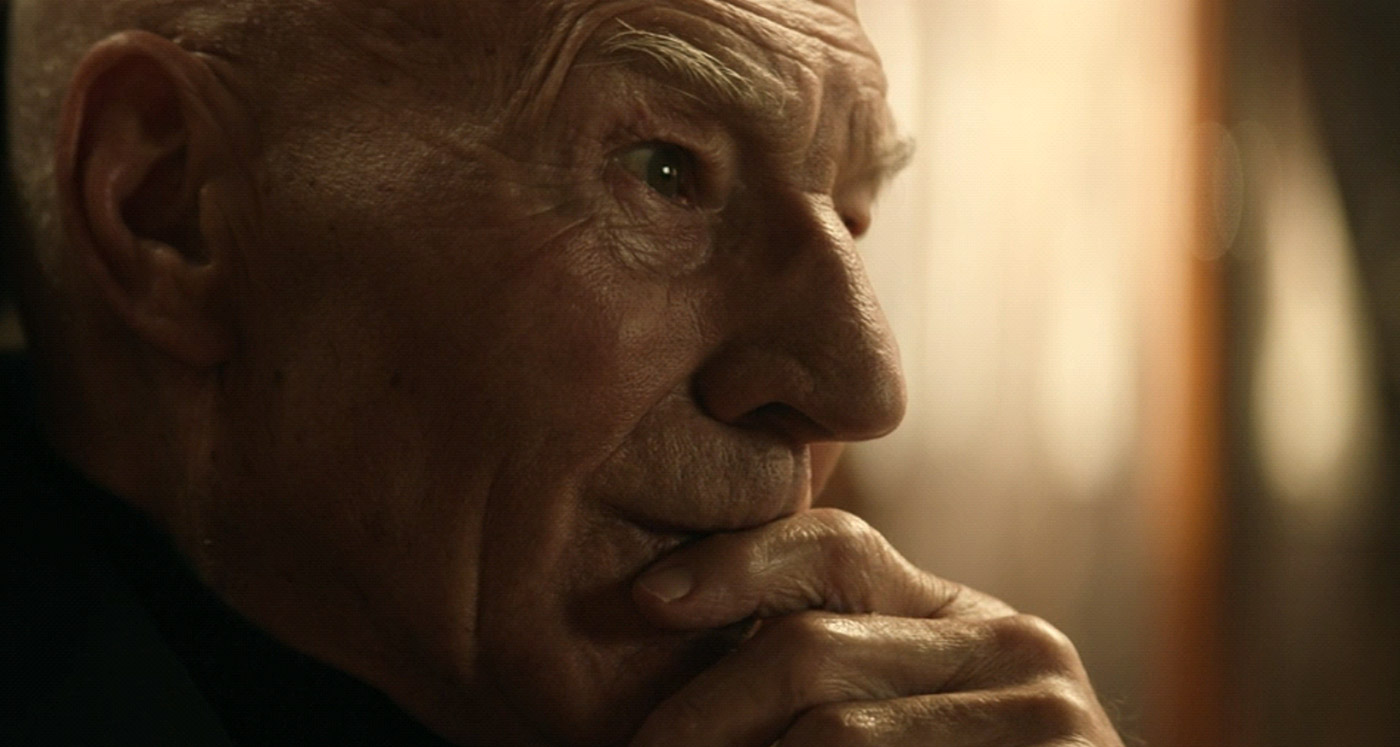
Source: Star Trek: Picard, Season 2, Paramount+
Never before in history have I dedicated such a lengthy review to such a bad show, but I felt it necessary to drive home just how categorically bad Picard has become in the space of one season. Star Trek died the moment Discovery hit the airwaves, but season 2 of Picard feels like vengeful spite on the part of the writers, who are trying their best to glass everything the franchise stood for.
TLDR = John de Lancie as Q is the only good thing about this season.
More About:Reviews Television TV Reviews
